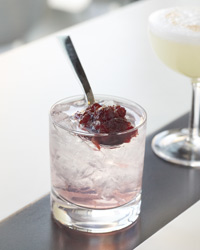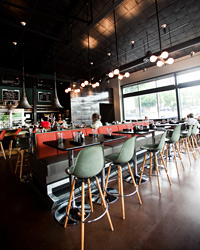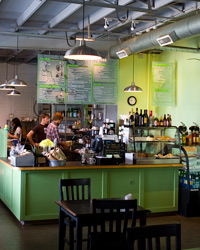You've heard the buzz. The raw food diet is gaining momentum! The audience for the raw food books is expanding at a very fast pace. This is because the Baby Boomer generation, many of whom refuse to grow old, is looking for answers. Another reason is that the rising cost of health care (as well as the disappointing side effects of drugs and surgery) is creating a consciousness in people that they need to take responsibility for their health and not hire someone else to be in charge of their body's fate.
The word is getting out---the raw diet is not just another weight loss fad. This is the natural diet and people on this diet have reversed cancer, heart disease, hepatitis, and other major diseases-as well as minor nuisances such as herpes, athlete's foot, dandruff, and even sleepwalking.
The younger generation has also caught on to this diet. Most of them have come from the vegan population. These are ardently opposed to the eating of any animal products. Many feel the next step for them is to "go raw." Many of them view this diet as a spiritual practice, since the energy normally used to digest cooked food is freed up to go to the higher centers.
Then there are the women who also get hooked into this diet for beauty. Model Carol Alt is the ultimate example, and she showed the power of a raw diet to create a beautiful body and maintain youth by posing nude in December 2008's Playboy magazine. Women love this diet for weight loss and maintenance, soft and radiant skin, loss of cellulite, full hair (sometimes even reversing the gray!), and more.
The word is also getting out that the raw diet helps with athletic performance, getting the competitive edge at work, mental health (being freed from depression, schizophrenia, and more), and creativity.
But what does this strange diet consist of? Are all these raw fooders eating salads and munching on carrots and bananas all day? How could that possibly provide enough calories and variety to sustain people for the long run?
A typical raw food vegan diet consists of unheated (not above 118 F) fruits, vegetables, nuts, seeds, and sprouted grains and lentils. From this seemingly limited fare, however, one can create a wide variety of dishes, ranging from the "fast food" smoothies and salads to the gourmet imitations of cooked food dishes. Most raw fooders eat this way. They expand the variety of plant food they consume, eating a wide variety of olives, or exotic fruit, for example.
A raw vegetarian might also include raw egg yolks (providing they are from an organic, preferably flax
seed-fed, free range chicken) as well as some raw dairy such as kiefer (available in raw dairy states like California; otherwise you have to buy from the Amish or own part of a cow or goat).
There are also those who eat raw meat, such as steak tartar, ceviche, and sashimi. Marinating it overnight in lemon juice it is supposed to kill the parasites.
Omitting cooked food might seem like a huge sacrifice, but raw fooders don't feel deprived once they have weaned themselves from addictive processed food, filled with sugar, wheat, dairy, monosodium glutamate, table salt, aspartame and intense spices, all of which serve to hook the consumer into food addiction. Raw food actually tastes better than cooked food, because the flavor isn't cooked out into the air. You just don't need to add all those spices and toxic ingredients.
It is easy to make a raw, whole food recipe which most of us are very familiar with: guacamole is an example---just make it from whole foods instead of a mix! Or make trail mix from raw shredded coconut, nuts, seeds, and sundried raisons and apricots.
Many people who go raw use raw gourmet recipes that mimic their favorite cooked dishes until they are used to eating raw, after which they boast spending no more than 10 minutes a day in the kitchen. The raw gourmet dishes often require expensive machines, such as a Vitamix and a temperature-controlled dehydrator, but you can do a lot with just a blender and a food processor.
Here are a few gourmet raw recipes from The Live Food Factor, A Comprehensive Guide to the Ultimate Diet for Body, Mind, Spirit & Planet:
Sunflower Seed Pâté
1 cup sunflower seeds, soaked overnight, rinsed
1 cup pumpkin seeds, soaked overnight, rinsed
½ cup pitted olives
2 red bell peppers
½ bunch cilantro or favorite fresh herb
1 t Celtic or Himalayan salt
½-1 cup sun-dried tomatoes, soaked for 30 minutes and cut into small pieces with scissors
Put the seeds through a blank screen of a juicer. If you don't have a juicer with a blank screen, you can use a food processor with the "S" blade to blend them, but it won't be as creamy. Then, mix all other ingredients in the food processor with the "S" blade.
Raw Candy
Nuts, soaked 6-12 hours, rinsed and drained
Dates
Raw carob powder, to taste (optional)
Raw shredded coconut or unhulled sesame seeds
Mix nuts, dates and carob in food processor. Mix in a food processor with the "S" blade until the mixture forms a ball that bounces around inside that machine. Remove and form little balls. Roll the balls in sesame seeds and/or raw shredded coconut. These keep a long time in the freezer. Experiment with ingredient proportions and quantities to suit your own taste.
Deluxe Macadamia Nut Cheese
12 oz (3 cups) macadamia nuts, soaked 6-12 hours, rinsed and drained
1 t Celtic sea salt
2 cloves garlic
1 T fresh cilantro
¼ cup lemon juice
3/8-½ cup unpasteurized olive oil
Blend in food processor with the "S" blade, adding the nuts a little at a time. Mix until creamy, the texture of cream cheese.
Note: For a creamier mixture, you could put the nuts through a juicer with the blank screen before putting them into the food processor. In that case, you will need about half the olive oil! You might have to add one or two tablespoons more of oil.
Blend until it has the creamy texture of cream cheese. Serve on flax crackers, or use as a vegetable dip with zucchini, baby carrots, sliced bell peppers, fresh broccoli and so on.
Tahini Sauce
1 cup raw tahini
¾ cup unpasteurized olive oil
2/3 cup orange juice (about 2 medium-sized oranges)
3 cloves garlic
1½ inches fresh ginger
1 T nama shoyu (optional)
1-2 t Celtic sea salt
¼ cup fresh cilantro (optional)
Mix in food processor with the "S" blade, adding ingredients a little at a time. Mix until creamy. This is great on raw Oriental vegetables for a stir-fry or on Nori Rolls.
Chinese Stir "Fry"
1 foot long daikon radish
4 carrots
1 bunch green onions
5-6 stalks celery
½ head small cabbage
2 zucchinis
1 red bell pepper
1 cup mung bean sprouts
¾ cup watercress
3 stalks broccoli
1½ cups snow peas
Slivered raw almonds or raw cashews
Sesame seeds
Tahini sauce (see "Sauces, Salad Dressings, Condiments")
Tempeh (optional)
With the food processor, grate the daikon radish, and slice the carrots, celery, green onions, cabbage, zucchinis and bell pepper. (This is one time you will be especially thankful for your food processor: A job that could otherwise take an hour will be finished in minutes!) Put into a large bowl. Cut off florets from broccoli and toss into the mixture. Chop off tips of watercress and toss in, along with mung bean sprouts. Cut off stringy ends of snow peas and toss in. Fold in about a cup of tahini sauce. Top off with almond slivers (or truly raw cashews, sliced) and sesame seeds. Chop up tempeh and fold into mixture.
Serves 8-10.
Raw Hummus
2 zucchinis
¾ cup unhulled sesame seeds, soaked 6-12 hours, rinsed, drained
¾ cup raw tahini
¼-½ t cayenne
½ t celery salt
3-4 garlic cloves
1 t Celtic sea salt
¼ cup lemon juice
Blend in a food processor with the "S" blade, adding ingredients a little at a time until creamy. Serve on flax crackers or use as a vegetable dip with sliced zucchini, baby carrots, sliced bell peppers and fresh broccoli.
With a bit of effort, it is easy to transition to a mainly raw diet. After a year or so, most are satisfied with eating simply. Nothing could be tastier than Nature's fast food, after all!
Susan Schenck, LAc, is a raw food coach, lecturer, and author of The Live Food Factor, The Comprehensive Guide to the Ultimate Diet for Body, Mind, Spirit & Planet, known as the encyclopedia of the raw food diet. Go to http://www.livefoodfactor.com to get a free chapter from her book.
 The Hudson Valley, just north of Manhattan, has beautiful scenery as well as serious new restaurants. Photo © Joseph Sohm/Visions of America/Corbis.
The Hudson Valley, just north of Manhattan, has beautiful scenery as well as serious new restaurants. Photo © Joseph Sohm/Visions of America/Corbis. 


 Photo © Vanessa Escobedo Barba.
Photo © Vanessa Escobedo Barba. Photo courtesy of Progress Coffee/ Orange Cone Agency.
Photo courtesy of Progress Coffee/ Orange Cone Agency.